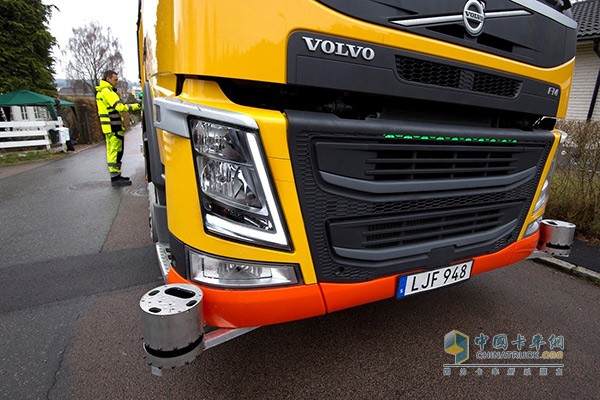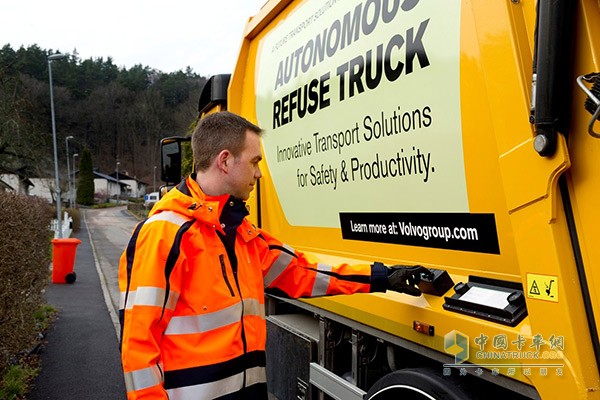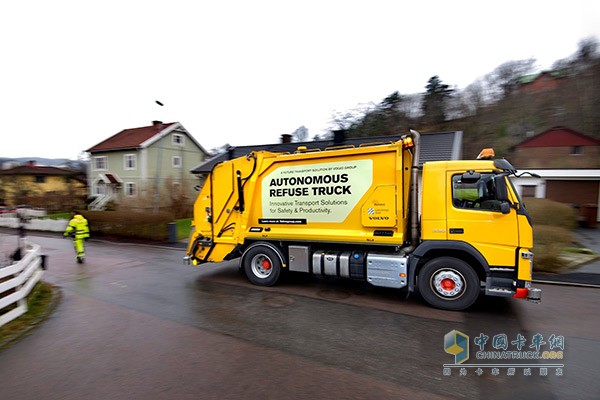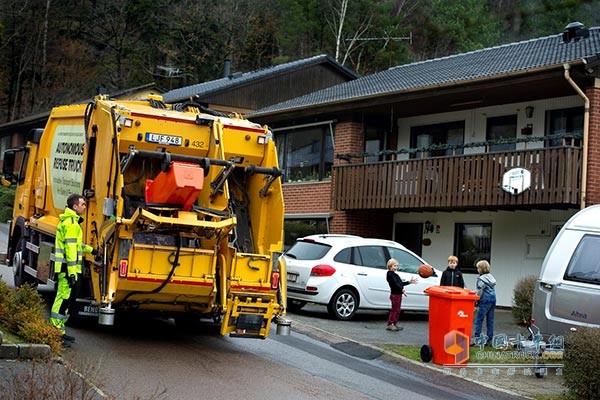The tested autopilot system is in principle the same as the Volvo self-driving truck put into use at the Kristineburg mine in northern Sweden since autumn 2016. “In urban residential areas spread over narrow streets and vulnerable road users, driving heavy commercial vehicles themselves will need to meet stringent safety requirements, even when the speed does not exceed the normal walking speed. The garbage truck we are testing now can continue. The surroundings are monitored and if there is a sudden obstruction on the road, it will stop automatically. At the same time, the autopilot system creates better preconditions for the driver to keep an eye out for everything that is happening near the truck.†Volvo Truck Traffic and Products Security Director Carl Johan Almqvist said. For the first time in the new area, when using an autonomous driving garbage truck, manual driving is required. At this time, the onboard system continuously monitors and draws routes using sensors and GPS technology. The second time into the same area, the truck knows exactly which route to follow and knows which bins to stop next to. When the first parking is enabled after the autopilot system is activated, the driver climbs out of the cab, walks behind the truck, removes the wheeled bins, emptys the garbage, and completes the operation by the relevant control device. This is exactly the same as the current mode of operation. After the operation is completed and the driver's order is received, the truck will automatically revert to the next bin. The driver follows the same route as the truck, so he can always see the traffic in the driving direction. But why reverse the car instead of going forward? "When the truck is reversing, the driver can stay beside the garbage compactor device without having to walk back and forth between the rear of the truck and the cab every time the truck is traveling. Also, since the driver does not need to start at each stop Climbing in and out of the cab minimizes the risk of related injuries such as knee and other joint strains, said Hans Zachrisson, manager of strategic development at Renova. In other situations, reversing is a relatively dangerous operation. Even with the camera installed, it may be difficult for the driver to see who or what is moving behind the truck. For safety reasons, some areas do not allow heavy commercial vehicles to drive in reverse. Other areas require that the secondary driver must stand behind the truck to ensure that all obstacles on the road are cleared before allowing the vehicle to reverse. This solution is now being tested to eliminate these problems. Since the sensors monitor all areas around the garbage truck, the vehicle is equally safe in whatever direction it is traveling. For example, if a parked car is blocking the street, as long as there is enough space near the car, the garbage truck can automatically bypass obstacles. The autopilot system is optimized for shifting, steering and speed, which also reduces fuel consumption and emissions. Although the technical scope has been determined at present, a large amount of research, testing and development are still needed before the automated garbage truck can become a reality. The current joint project will continue until the end of 2017, after which it will thoroughly evaluate its functionality and safety, especially the acceptance of such vehicles by drivers, other road users and local residents. We may launch vehicles with different degrees of autopilot first in other applications where transportation tasks are carried out in confined areas such as mines and freight stations. Sodium acetate is used as a buffering agent for seasoning, which can alleviate bad odor and prevent discoloration, and has certain anti-mold effect. Sodium acetate can also be used as a sour agent for seasoning, sauerkraut, mayonnaise, fish cake, sausage, bread, sticky cake and so on. Sodium acetate is mixed with methylcellulose and phosphate to improve the preservation of sausages, breads, stickies, etc. Sodium Ethanoate,Sodium Acetate Sigma,Sodium Acetate And Water,Sodium Acetate Anhydrous ZIBO JUNTU INTERNATIONAL TRADE CO.,LTD , https://www.sdjuntuchem.com Carl Johan Almqvist, Volvo Truck Traffic and Product Safety Director
Carl Johan Almqvist, Volvo Truck Traffic and Product Safety Director  The sensor continuously monitors the environment around the truck, making it safe to drive backwards as if it were driving forward
The sensor continuously monitors the environment around the truck, making it safe to drive backwards as if it were driving forward  After pressing the button, the garbage truck reverses itself to the next bin on the street
After pressing the button, the garbage truck reverses itself to the next bin on the street  Hans Zachrisson, Renova Strategic Development Manager
Hans Zachrisson, Renova Strategic Development Manager  Drivers can stay next to the trash compactor device, eliminating the need to climb in and out of the cab every time they start and stop, reducing the risk of work injury
Drivers can stay next to the trash compactor device, eliminating the need to climb in and out of the cab every time they start and stop, reducing the risk of work injury  The driver walks in the direction of travel in front of the reverse truck, so he can always control the surrounding environment.
The driver walks in the direction of travel in front of the reverse truck, so he can always control the surrounding environment.  Volvo self-driving trucks can monitor the surroundings and stop automatically if there is an obstacle on the road.
Volvo self-driving trucks can monitor the surroundings and stop automatically if there is an obstacle on the road.
At present, Volvo Trucks is working with Swedish waste management company Renova to jointly test and research how to use self-driving vehicles to improve the safety and efficiency of waste disposal and create a better working environment for drivers.